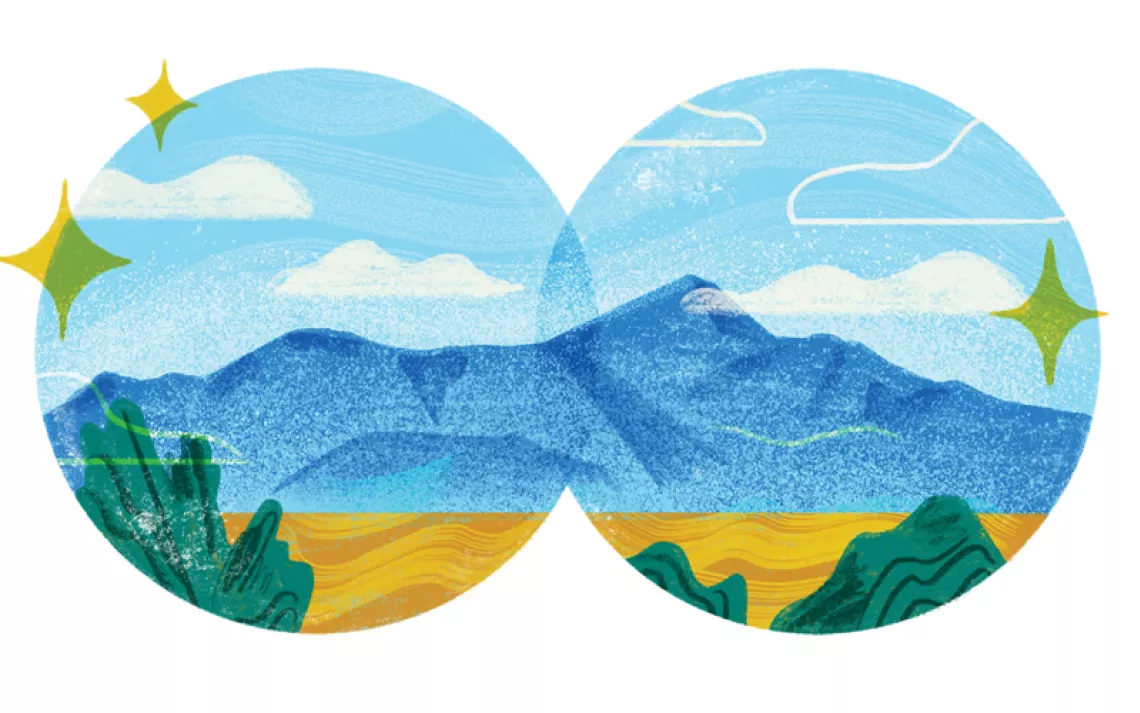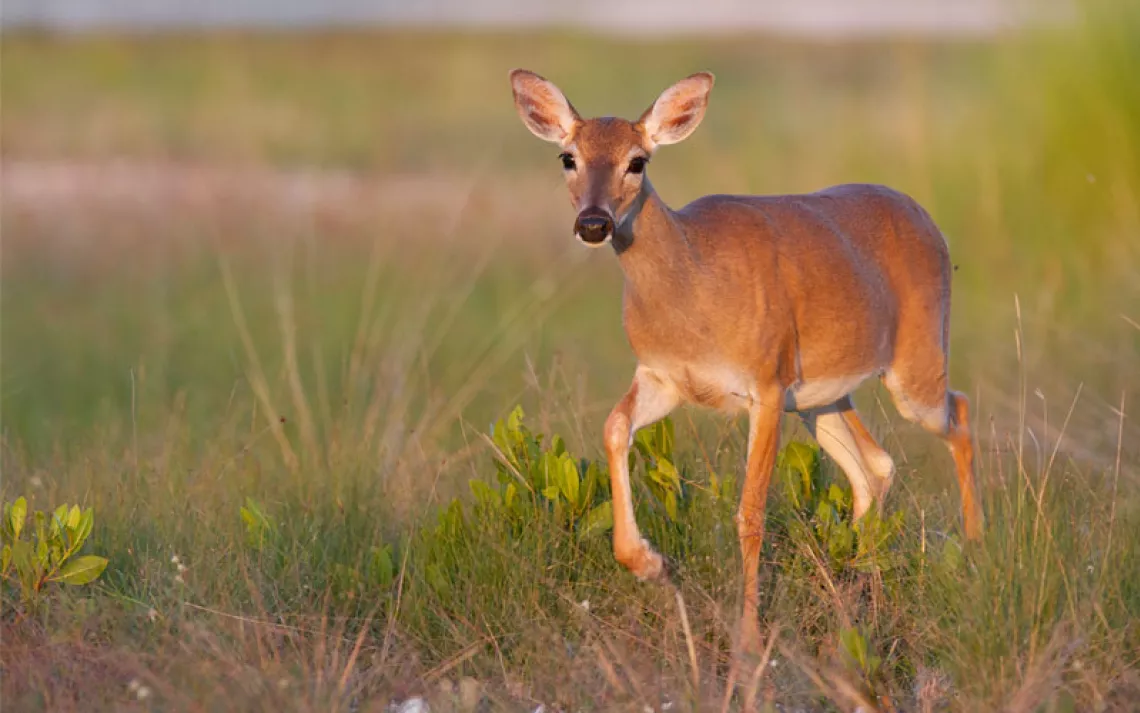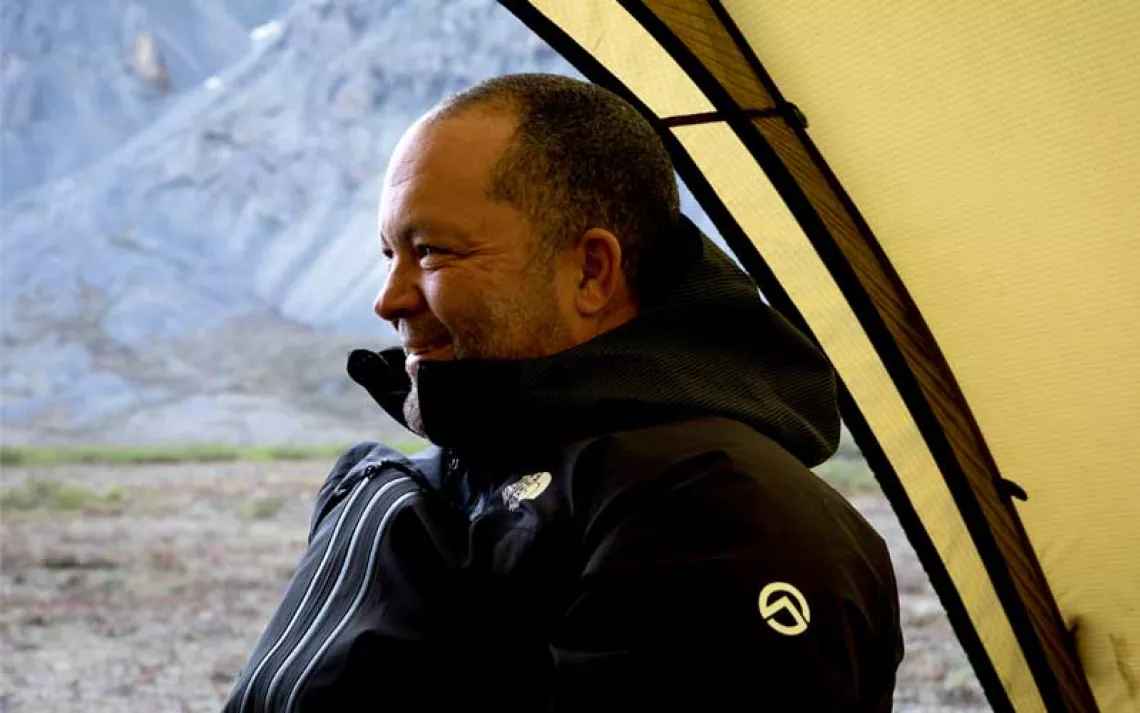“Where’s the best place to raise children?”

Photo courtesy of Kathryn Aalto.
Ten years ago, my family and I moved from our beautiful 20-acre wildlife haven of meadows, woods, and a salmon-spawning stream to Exeter, England. We left the vast American West with its earthquakes, volcanoes, and charismatic megafauna for an uncertain future in a foreign land. Goodbye, frontier.
I was uncertain and wary about moving to a country that looked geographically claustrophobic. For Americans, wilderness is both an important concept and a real place. Times I'd spent on mountains and beaches had become part of my inner landscape. I carried in me a strong spirit of place. I could not imagine raising my children—then 3, 6, and 9—without that.
But changes in latitudes can induce changes in attitudes.
Within two days of landing, I stumbled across a book in a shop entitled Classic Walks in Britain. I discovered that the English landscape offers a feature I'd never encountered in the United States: public footpaths.
I was fascinated.
Ancient in origin, public footpaths extend like spider veins from Cornwall to Scotland. The narrow dirt paths have been worn down over centuries by people and animals traveling from hamlet to village, village to town, town to city. Even if footpaths lead through a farmer's flock of sheep, or near his farmhouse, there is a legal Right to Roam—a law that sharply separates England from America.
Before the jet lag wore off, we had clocked in about 20 miles of walking on public footpaths. I was hooked.
At the same time, I was reading classic children's stories to help ground my kids in this trans-Atlantic move. After all, I wrote The Natural World of Winnie-the-Pooh after thinking about two very simple questions: Is there a Hundred Acre Wood and . . . can we walk there? I poked around and learned Milne and his wife Daphne moved to Ashdown Forest, a tranquil 6000-acre heathland and woodland about an hour south of London, to give their son Christopher Robin the kind of free-range childhood Milne, especially, enjoyed. As I read and re-read aloud Winnie-the-Pooh and The House at Pooh Corner (1928), the tender adventures of this boy and his imaginary friends became greater than 20 children's stories. Born from Milne's memories of his own golden childhood in the natural world, they struck me as field guides for the free-range child. They felt like tender touchstones for a time we are trying to regain.
“Where’s the best place to raise children?”
I was not prepared the first time I was asked this, but I've given it some thought.
We all want our children to care about the natural world. We want them to feel a spirit of place, to recreate and find solace outdoors, to know the names of plants and animals. Children need unscheduled time outdoors to find their own way of connecting with their surroundings. Every child should have plants to nurture, both at home—even a single potted plant—and school (in a garden).
Richard Louv, author of Last Child in the Woods and Vitamin N: The Essential Guide to a Nature Rich Life, is concerned that the bond is breaking between the young and the natural world. He writes about the growing body of research linking our mental, physical, and spiritual health to our positive experiences with nature.
Yet neither in England nor America will children experience the grandeur of a sunset, the surprise of frothy waves on beaches, or the beauty of a fat raindrop clinging to a red apple if they are glued to phones and computers. We parents need to guard, model, and limit time in digital landscapes. We also need to express our curiosity about the natural world and demonstrate that we are not spectators, nor sedentary.
In England’s pre-car-culture landscape, I’ve found that there are greater opportunities to set out for gentle adventures. However, in the United States, letting children simply go for an amble, as Christopher Robin did, can put parents at risk of a citation, as was the case in Silver Springs, Maryland, when some parents let their two children walk a mile from a park to home one day.
But in England, we do not have the Rockies, Sierras, or Appalachians. We do not have geysers, bison, or wolves. We do not have deserts or plains or rainforests. American landscapes can inspire a natural grandeur in children that they might not experience in gentler England. Fortunately, you can be almost anywhere to witness a spider web filled with dewdrops.
The better landscape for raising children may be the one where gentle guides show them both the grandeur of the big, and the miracle of the small.
 The Magazine of The Sierra Club
The Magazine of The Sierra Club



